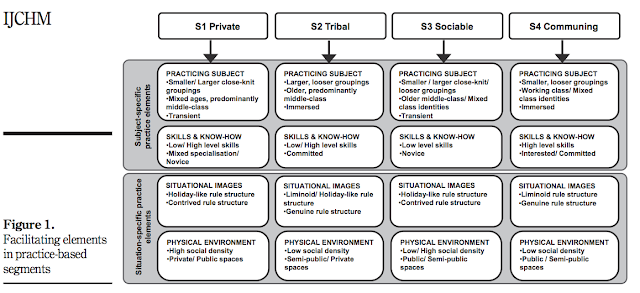New paper published: Rihova, I., Moital, M., Buhalis, D. and Gouthro, M. (2019), “Practice-based segmentation: taxonomy of Customer to Customer (C2C) co-creation practice segments“, International Journal of Contemporary Hospitality Management, https://doi.org/10.1108/IJCHM-01-2018-0096
Abstract
This paper aims to explore and evaluate practice-based segmentation as an alternative conceptual segmentation perspective that acknowledges the active role of consumers as value co-creators. Data comprising various aspects of customer-to-customer (C2C) co-creation practices of festival visitors were collected across five UK-based festivals, using participant observation and semi-structured interviews with naturally occurring social units (individuals, couples and groups). Data were analysed using a qualitative thematic analysis procedure within QSR NVivo 10. Private, sociable, tribal and communing practice segments are identified and profiled, using the interplay of specific subject- and situation-specific practice elements to highlight the “minimum” conditions for each C2C co-creation practice. Unlike traditional segments, practice segment membership is shown to be fluid and overlapping, with fragmented consumers moving across different practice segments throughout their festival experience according to what makes most sense at a given time. Although practice-based segmentation is studied in the relatively limited context of C2C co-creation practices at festivals, the paper illustrates how this approach could be operationalised in the initial qualitative stages of segmentation research. By identifying how the interplay of subject- and situation-specific practice elements affects performance of practices, managers can facilitate relevant practice-based segments, leading to more sustainable business. The paper contributes to segmentation literature by empirically demonstrating the feasibility of practice-based segments and by evaluating the use of practice-based segmentation on a strategic, procedural and operational level. Possible methodological solutions for future research are offered.

